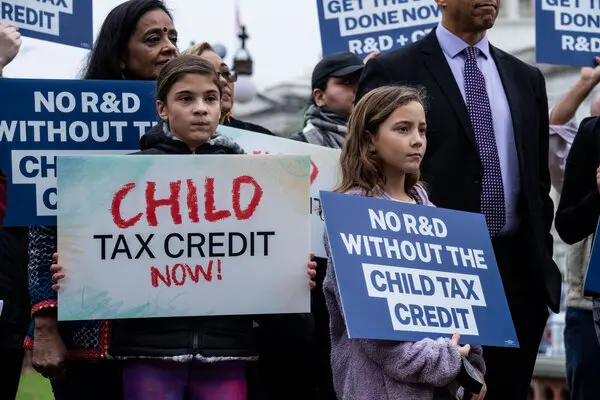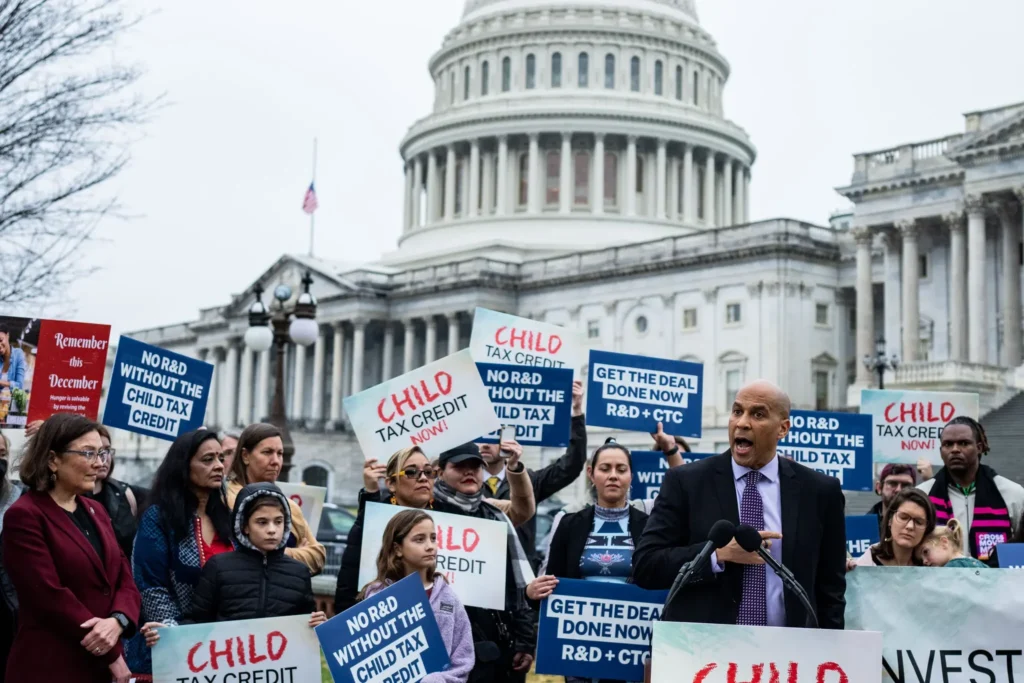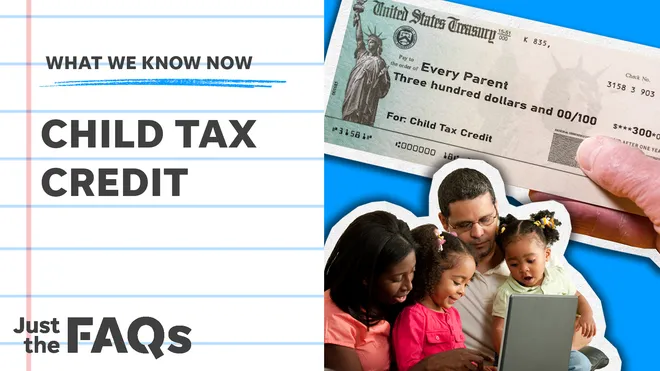Unlocking the $78B Tax Package: Child Tax Credit Expansion Explained

In the intricate dance of legislative power, the recent resounding approval of the $78 billion tax package by the U.S. House marks a pivotal moment in shaping the nation’s economic landscape. At its core lies the transformative expansion of the Child Tax Credit, a move designed to provide immediate relief to American families. As we embark on a comprehensive exploration of the intricacies surrounding this monumental decision, let us delve into the multifaceted layers that define the Child Tax Credit and its broader impact on our society.
Child Tax Credit Expansion Unveiled: A Beacon of Support
The Child Tax Credit, a cornerstone of the tax package, is set to undergo a metamorphic expansion. The current credit, standing at $1,600 per child, is poised to ascend to $1,800 in 2023, $1,900 in 2024, and $2,000 in 2025. This three-year extension, while not reaching the zenith witnessed during the tumultuous times of the pandemic, aims to strike a delicate balance between offering essential support to families and addressing broader economic considerations.
But beyond the numerical increments lies a profound impact on real lives. For millions of families across the country, the additional financial relief could mean access to better education, improved living conditions, and enhanced overall well-being. In the face of rising inflation, the Child Tax Credit expansion becomes a beacon of support for those navigating the challenges of providing for their children.
Balancing Act: Navigating Tradeoffs and Confronting Challenges
The bipartisan nature of the House debate underscores the intricate tradeoffs involved in such a monumental tax policy shift. On one end of the spectrum, far-right voices express concerns about the potential broadening of the “welfare state,” fearing the unintended consequences of increased government support. On the other hand, progressive Democrats argue that the bill falls short in providing substantial relief for low-income families, emphasizing the need for a more expansive safety net.
The heart of the matter lies in the eligibility criteria and distribution of the Child Tax Credit. Critics express apprehensions about potential loopholes that might allow payments to reach undocumented immigrants, despite the stipulation requiring a Social Security number for the child. Addressing these concerns becomes paramount in ensuring the equitable and effective distribution of the credit.

Humanizing the Debate: Stories Behind the Statistics
Amidst the intricacies of legislative debates and policy discussions, it’s crucial to humanize the narrative. The Child Tax Credit expansion isn’t just a line item in a bill; it represents hope, resilience, and the pursuit of a better future for countless families. For parents working multiple jobs to make ends meet, the additional support could mean more than just a numerical increase – it could mean a sigh of relief, a moment of reprieve from financial strain.
Consider the single mother striving to provide a stable home for her two children. The extra funds from the expanded Child Tax Credit could translate into educational resources, extracurricular activities, or simply a moment of shared joy without the constant worry about making ends meet. These are the stories that breathe life into the policy discourse, illustrating the tangible impact of legislative decisions on the fabric of American lives.
In sharing stories of families grappling with the challenges of raising children amidst economic uncertainties, we shed light on the real faces behind the statistics. It’s about kids who need more than just diapers and shoes; it’s about parents striving to provide a stable foundation for their children’s futures. Understanding these narratives adds a human touch to the policy discourse, reminding us that every decision made in the hallowed halls of government resonates in the daily lives of ordinary citizens.
Business Tax Breaks and the Quest for Competitive Edge
Beyond the scope of individual households, the tax package introduces several incentives for businesses, with a focus on the immediate deduction of research and development investments made within the United States. Proponents argue that such measures are essential for enhancing America’s competitive position on the global stage, especially concerning the economic rivalry with China.
However, this approach is not without its critics. Skeptics question the allocation of benefits, with some labeling it as favoring big corporations over the well-being of middle- and working-class families. This divergence in opinions underscores the challenges inherent in crafting tax policies that cater to the diverse economic interests that make up the fabric of American society.
Looking Ahead: A Holistic Impact Assessment and Considerations for the Future
As the tax package transitions to the Senate, the spotlight intensifies on the broader implications of decisions surrounding the Child Tax Credit. Beyond the immediate economic impacts, the legislation aims to address housing affordability, support communities recovering from natural disasters, and more.
To truly understand the significance of these decisions, it’s essential to consider the far-reaching consequences. The three-year horizon for the Child Tax Credit expansion prompts questions about the future direction of tax policies and their adaptability to evolving economic landscapes. How will these decisions shape the trajectory of American families? What ripple effects will they create in communities nationwide?

Challenges and Triumphs: A Realistic Assessment of Policy Impact
In the realm of policy-making, acknowledging both the challenges and triumphs is essential for a realistic assessment of impact. The Child Tax Credit expansion, while heralded as a crucial step towards supporting families, does not exist in isolation. The broader economic landscape, characterized by inflationary pressures, shifting job markets, and global uncertainties, plays a pivotal role in shaping the effectiveness of such policy measures.
It’s crucial to recognize that legislative decisions involve a delicate balancing act, attempting to address immediate needs while navigating the complexities of long-term economic planning. As lawmakers deliberate on the tax package, a nuanced understanding of the multifaceted challenges faced by American families becomes imperative. Beyond the statistical analyses, policymakers must grapple with the lived experiences of those directly affected by these decisions.
Also Read:
- iPhone 15 Plus vs. iPhone 14 Plus: Upgrading Insights
- Samsung Galaxy Z Flip 6: Enhanced Battery, Camera, and Display Upgrades
- Exclusive: Ubisoft Games Leaked – Unveiling Titles and Release Dates
- HP Spectre X360 Review: Unleashing Top-notch Features
- Samsung Galaxy Book 3 Ultra 2024: Power and Elegance Unleashed Review
- Top 30 Countries for Quality Living in 2024
- Instagram Follower Boost: 18 Proven SEO Tips for Rapid Growth


